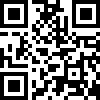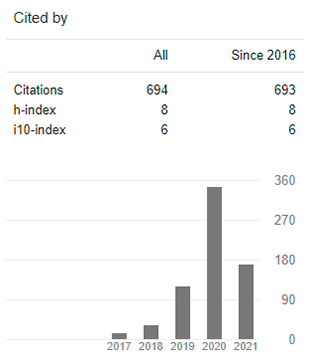Environmental indicators for initial teacher training at the National University of Education
DOI:
https://doi.org/10.29394/Scientific.issn.2542-2987.2019.4.14.12.249-270Keywords:
environmental indicators, student teacher relationship, teacher education, secondary teacher educationAbstract
The need to have a set of environmental indicators for contextualization in the initial teacher training that is developed at the National University of Education is the essential foundation of this research work; Therefore, the general objective is to propose a set of Indicators for the management of the environment axis in the initial teacher training of the National University of Education (UNAE) of Ecuador. The research used a qualitative methodology based on the application of techniques and instruments such as documentary analysis, discussion groups and expert criteria and their processing through the Delphi Method. Throughout the research process, sampling of voluntary participants and experts prevailed. As a result, those environmental indicators whose use is most relevant in the training process were identified: Annual electricity consumption, Annual water consumption, Annual paper consumption, Annual solid waste, Annual total precipitation, Average annual maximum temperature, Annual average temperature , Average annual minimum temperature, CO2 concentration in open or closed environments, Oxygen concentration in the air, Noise pollution, Proportion of households and people using solid fuels for cooking.
Downloads
References
Asamblea Nacional (2008a,b,c). Constitución de la República. Ecuador: Constitución de Montecristi.
Gutiérrez, B. (2010). Introducción a los métodos cualitativos: El grupo de discusión. Barcelona, España: Universitat Politècnica de Catalunya. Recuperado de: https://upcommons.upc.edu/
Herdoiza, M. (2015a,b). Construyendo Igualdad en la Educación Superior. Fundamentación y lineamientos para transversalizar los ejes de igualdad y ambiente. Quito, Ecuador: SENESCYT/UNESCO.
Hernández, L. (2010a,b,c). Modelo didáctico dirigido a la preparación de los estudiantes de la carrera de Licenciatura en Educación. Tesis en opción al grado científico de Doctor en Ciencias Pedagógicas, ISBN 13: 978-84-694-7200-2. Pinar del Río, Cuba: Universidad de Ciencias Pedagógicas “Rafael María de Mendive”. Recuperado de: http://www.eumed.net/tesis-doctorales/2011/leha/index.htm
Hernández, R., Fernández, C., & Baptista, P. (2010). Metodología de la Investigación. Quinta edición. México: McGraw-Hill.
Krueger, R. (1991a,b). El grupo de discusión. Guía práctica para la investigación aplicada. Madrid, España: Ediciones Pirámide.
Montesinos de Rodríguez, E. (2017). Planeación de la Educación Ambiental en el Ámbito Universitario: Una Mirada Transdisciplinaria. Revista Scientific, 2(6), 92-112, e-ISSN: 2542-2987. Recuperado de: https://doi.org/10.29394/scientific.issn.2542-2987.2017.2.6.5.92-112
Vive Nuestro Mundo (2019). Diez razones que avalan a Ecuador como un país mega-diverso. Ecuador: vivenuestromundo.com. Recuperado de: https://www.vivenuestromundo.com/2012/12/04/diez-razones-que-avalan-a-ecuador-como-un-pais-mega-diverso/
Pallares, A. (1999). Construcciones raciales, reforma agraria y movilización indígena en los años setenta. Quito, Ecuador: FLACSO.
UNAE (2019). Líneas de investigación. Azogues, Ecuador: Universidad Nacional de Educación. Recuperado de: https://www.unae.edu.ec/l-neas-de-investigaci-n
Downloads
Published
How to Cite
Issue
Section
License
Copyright (c) 2019 INDTEC, C.A.

This work is licensed under a Creative Commons Attribution-NonCommercial-ShareAlike 4.0 International License.
The content of the journals of this site, are under a Creative Commons Attribution-Noncommercial-Share Alike 4.0 International License.













